new posts in all blogs
Viewing: Blog Posts Tagged with: 2016 Caldecott contenders, Most Recent at Top [Help]
Results 1 - 6 of 6
How to use this Page
You are viewing the most recent posts tagged with the words: 2016 Caldecott contenders in the JacketFlap blog reader. What is a tag? Think of a tag as a keyword or category label. Tags can both help you find posts on JacketFlap.com as well as provide an easy way for you to "remember" and classify posts for later recall. Try adding a tag yourself by clicking "Add a tag" below a post's header. Scroll down through the list of Recent Posts in the left column and click on a post title that sounds interesting. You can view all posts from a specific blog by clicking the Blog name in the right column, or you can click a 'More Posts from this Blog' link in any individual post.

By:
Betsy Bird,
on 7/27/2016
Blog:
A Fuse #8 Production
(
Login to Add to MyJacketFlap)
JacketFlap tags:
Reviews,
nonfiction picture books,
Best Books,
picture book biographies,
Little Brown and Company,
African-American history,
Javaka Steptoe,
African-American biographies,
African-American picture book biographies,
African-American authors and illustrators,
2016 Caldecott contenders,
Best Books of 2016,
Reviews 2016,
2016 nonfiction picture books,
2016 picture book biographies,
Add a tag
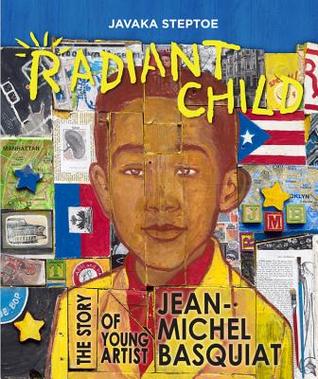 Radiant Child: The Story of Young Artist Jean-Michel Basquiat
Radiant Child: The Story of Young Artist Jean-Michel Basquiat
By Javaka Steptoe
Little, Brown & Co.
$17.99
ISBN: 978-0-316-21388-2
Ages 5 and up
On shelves October 25th
True Story: I’m working the children’s reference desk of the Children’s Room at 42nd Street of New York Public Library a couple years ago and a family walks in. They go off to read some books and eventually the younger son, I’d say around four years of age, approaches my desk. He walks right up to me, looks me dead in the eye, and says, “I want all your Javaka Steptoe books.” Essentially this child was a living embodiment of my greatest dream for mankind. I wish every single kid in America followed that little boy’s lead. Walk up to your nearest children’s librarian and insist on a full fledged heaping helping of Javaka. Why? Well aside from the fact that he’s essentially children’s book royalty (his father was the groundbreaking African-American picture book author/illustrator John Steptoe) he’s one of the most impressive / too-little-known artists working today. But that little boy knew him and if his latest picture book biography “Radiant Child: The Story of Young Artist Jean-Michel Basquiat” is even half as good as I think it is, a whole host of children will follow suit. But don’t take my word for it. Take that four-year-old boy’s. That kid knew something good when he saw it.
“Somewhere in Brooklyn, a little boy dreams of being a famous artist, not knowing that one day he will make himself a KING.” That boy is an artist already, though not famous yet. In his house he colors on anything and everything within reach. And the art he makes isn’t pretty. It’s, “sloppy, ugly, and sometimes weird, but somehow still BEAUTIFUL.” His mother encourages him, teaches him, and gives him an appreciation for all the art in the world. When he’s in a car accident, she’s the one who hands him Gray’s Anatomy to help him cope with what he doesn’t understand. Still, nothing can help him readily understand his own mother’s mental illness, particularly when she’s taken away to live where she can get help. All the same, that boy, Jean-Michel Basquiat, shows her his art, and with determination he grows up, moves to Manhattan, and starts his meteoric rise in the art scene. All this so that when, at long last, he’s at the top of his game, it’s his mother who sits on the throne at his art shows. Additional information about Basquiat appears at the back of the book alongside a key to the motifs in his work, an additional note from Steptoe himself on what Basquiat’s life and work can mean to young readers, and a Bibliography.
 Javaka Steptoe apparently doesn’t like to make things easy for himself. If he wanted to, he could illustrate all the usual African-American subjects we see in books every year. Your Martin Luther Kings and Rosa Parks and George Washington Carvers. So what projects does he choose instead? Complicated heroes who led complicated lives. Artists. Jimi Hendrix and guys like that. Because for all that kids should, no, MUST know who Basquiat was, he was an adult with problems. When Steptoe illustrated Gary Golio’s bio of Hendrix (Jimi: Sounds Like a Rainbow) critics were universal in their praise. And like that book, Steptoe ends his story at the height of Basquiat’s fame. I’ve seen some folks comment that the ending here is “abrupt” and that’s not wrong. But it’s also a natural high, and a real time in the man’s life when he was really and truly happy. When presenting a subject like Basquiat to a young audience you zero in on the good, acknowledge the bad in some way (even if it’s afterwards in an Author’s Note), and do what you can to establish precisely why this person should be mentioned alongside those Martin Luther Kings, Rosa Parks, and George Washington Carvers.
Javaka Steptoe apparently doesn’t like to make things easy for himself. If he wanted to, he could illustrate all the usual African-American subjects we see in books every year. Your Martin Luther Kings and Rosa Parks and George Washington Carvers. So what projects does he choose instead? Complicated heroes who led complicated lives. Artists. Jimi Hendrix and guys like that. Because for all that kids should, no, MUST know who Basquiat was, he was an adult with problems. When Steptoe illustrated Gary Golio’s bio of Hendrix (Jimi: Sounds Like a Rainbow) critics were universal in their praise. And like that book, Steptoe ends his story at the height of Basquiat’s fame. I’ve seen some folks comment that the ending here is “abrupt” and that’s not wrong. But it’s also a natural high, and a real time in the man’s life when he was really and truly happy. When presenting a subject like Basquiat to a young audience you zero in on the good, acknowledge the bad in some way (even if it’s afterwards in an Author’s Note), and do what you can to establish precisely why this person should be mentioned alongside those Martin Luther Kings, Rosa Parks, and George Washington Carvers.
There’s this moment in the film Basquiat when David Bowie (playing Andy Warhol) looks at some of his own art and says off-handedly, “I just don’t know what’s good anymore.” I have days, looking at the art of picture books when I feel the same way. Happily, there wasn’t a minute, not a second, when I felt that way about Radiant Child. Now I’m going to let you in on a little secret: Do you know what one of the most difficult occupations to illustrate a picture book biography about is? Artist. Because right from the start the illustrator of the book is in a pickle. Are you going to try to replicate the art of this long dead artist? Are you going to grossly insert it into your own images, even if the book isn’t mixed media to begin with? Are you going to try to illustrate the story in that artist’s style alone, relegating images of their actual art to the backmatter? Steptoe addresses all this in his Note at the back of the book. As he says, “Instead of reproducing or including copies of real Basquiat paintings in this book, I chose to create my own interpretations of certain pieces and motifs.” To do this he raided Basquiat’s old haunts around NYC for discarded pieces of wood to paint on. The last time I saw this degree of attention paid to painting on wood in a children’s book was Paul O. Zelinsky’s work on Swamp Angel. In Steptoe’s case, his illustration choice works shockingly well. Look how he manages to give the reader a sense of perspective when he presents Picasso’s “Guernica” at an angle, rather than straight on. Look how the different pieces of wood, brought together, fit, sometimes including characters on the same piece to show their closeness, and sometimes painting them on separate pieces as a family is broken apart. And the remarkable thing is that for all that it’s technically “mixed-media”, after the initial jolt of the art found on the title page (a full wordless image of Basquiat as an adult surrounded by some of his own imagery) you’re all in. You might not even notice that even the borders surrounding these pictures are found wood as well.
 The precise age when a child starts to feel that their art is “not good” anymore because it doesn’t look realistic or professional enough is relative. Generally it happens around nine or ten. A book like Radiant Child, however, is aimed at younger kids in the 6-9 year old range. This is good news. For one thing, looking at young Basquiat vs. older Basquiat, it’s possible to see how his art is both childlike and sophisticated all at once. A kid could look at what he’s doing in this book and think, “I could do that!” And in his text, Steptoe drills into the reader the fact that even a kid can be a serious artist. As he says, “In his house you can tell a serious ARTIST dwells.” No bones about it.
The precise age when a child starts to feel that their art is “not good” anymore because it doesn’t look realistic or professional enough is relative. Generally it happens around nine or ten. A book like Radiant Child, however, is aimed at younger kids in the 6-9 year old range. This is good news. For one thing, looking at young Basquiat vs. older Basquiat, it’s possible to see how his art is both childlike and sophisticated all at once. A kid could look at what he’s doing in this book and think, “I could do that!” And in his text, Steptoe drills into the reader the fact that even a kid can be a serious artist. As he says, “In his house you can tell a serious ARTIST dwells.” No bones about it.
How much can a single picture book bio do? Pick a good one apart and you’ll see all the different levels at work. Steptoe isn’t just interested in celebrating Basquiat the artist or encouraging kids to keep working on their art. He also notes at the back of the book that the story of Basquiat’s relationship with his mother, who suffered from mental illness, was very personal to him. And so, Basquiat’s mother remains an influence and an important part of his life throughout the text. You might worry, and with good reason, that the topic of mental illness is too large for a biography about someone else, particularly when that problem is not the focus of the book. How do you properly address such an adult problem (one that kids everywhere have to deal with all the time) while taking care to not draw too much attention away from the book’s real subject? Can that even be done? Sacrifices, one way or another, have to be made. In Radiant Child Steptoe’s solution is to show Jean-Michel within the lens of his art’s relationship to his mother. She talks to him about art, takes him to museums, and encourages him to keep creating. When he sees “Guernica”, it’s while he’s holding her hand. And because Steptoe has taken care to link art + mom, her absence is keenly felt when she’s gone. The book’s borders go a dull brown. Just that single line “His mother’s mind is not well” says it succinctly. Jean-Michel is confused. The kids reading the book might be confused. But the feeling of having a parent you are close to leave you . . . we can all relate to that, regardless of the reason. It’s just going to have a little more poignancy for those kids that have a familiarity with family members that suffer mental illnesses. Says Steptoe, maybe with this book those kids can, “use Basquiat’s story as a catalyst for conversation and healing.”
That’s a lot for a single picture book biography to take on. Yet I truly believe that Radiant Child is up to the task. It’s telling that in the years since I became a children’s librarian I’ve seen a number of Andy Warhol biographies and picture books for kids but the closest thing I ever saw to a Basquiat bio for children was Life Doesn’t Frighten Me as penned by Maya Angelou, illustrated by Jean-Michel. And that wasn’t even really a biography! For a household name, that’s a pretty shabby showing. But maybe it makes sense that only Steptoe could have brought him to proper life and to the attention of a young readership. In such a case as this, it takes an artist to display another artist. Had Basquiat chosen to create his own picture book autobiography, I don’t think he could have done a better job that what Radiant Child has accomplished here. Timely. Telling. Overdue.
On shelves October 25th.
Source: F&G sent from publisher for review.
Professional Reviews: A star from Kirkus

See this money? It’s time to put it where my mouth is. OPEN UP, MOUTH!
So if you’re playing along at home you might have noticed that I’m a bit . . . ah . . . last minute-ish with my final predictions this year. Considering that today is Thursday and the Newbery/Caldecott Awards (amongst other Youth Media Awards) will be announced this Monday at 8 a.m. EST (and viewable here), I’m positively late.
Ah well. Life, it has a way of interrupting your best laid plans. In any case, I’m ready now. And before I forget, I should mention that if you’ve any interest in killing time before the ALA Awards on Monday, why not tune in for my Pre-Game Show beforehand? I’ll be livestreaming my thoughts on the possible winners. Then you can come back for the Post-Game Show where I kvetch, cheer, and generally make a fool of myself while my 19-month-old son wails outside my office door, wondering why his mommy isn’t sticking to her usual routine that morning. Or I may pull him into the room to meet you. I’m not above bribing you to watch. Alas, my delightful co-host Lori will not be joining me this year, so it’s just l’il ole me. And maybe a baby.
And for those of you interested in what other people around the country are interested in winning, be sure to check out ALSC’s collection of Mock Elections here.
All right. Enough of that. Here are my final predictions. As ever, I’d like to point out that with the possible exception of 2008, I almost never get these predictions right. I go with my gut but my guts are fickle and can be bribed with donuts.
Onward.
Caldecott Award
Winner:
Last Stop on Market Street by Matt de la Pena. Illustrated by Christian Robinson
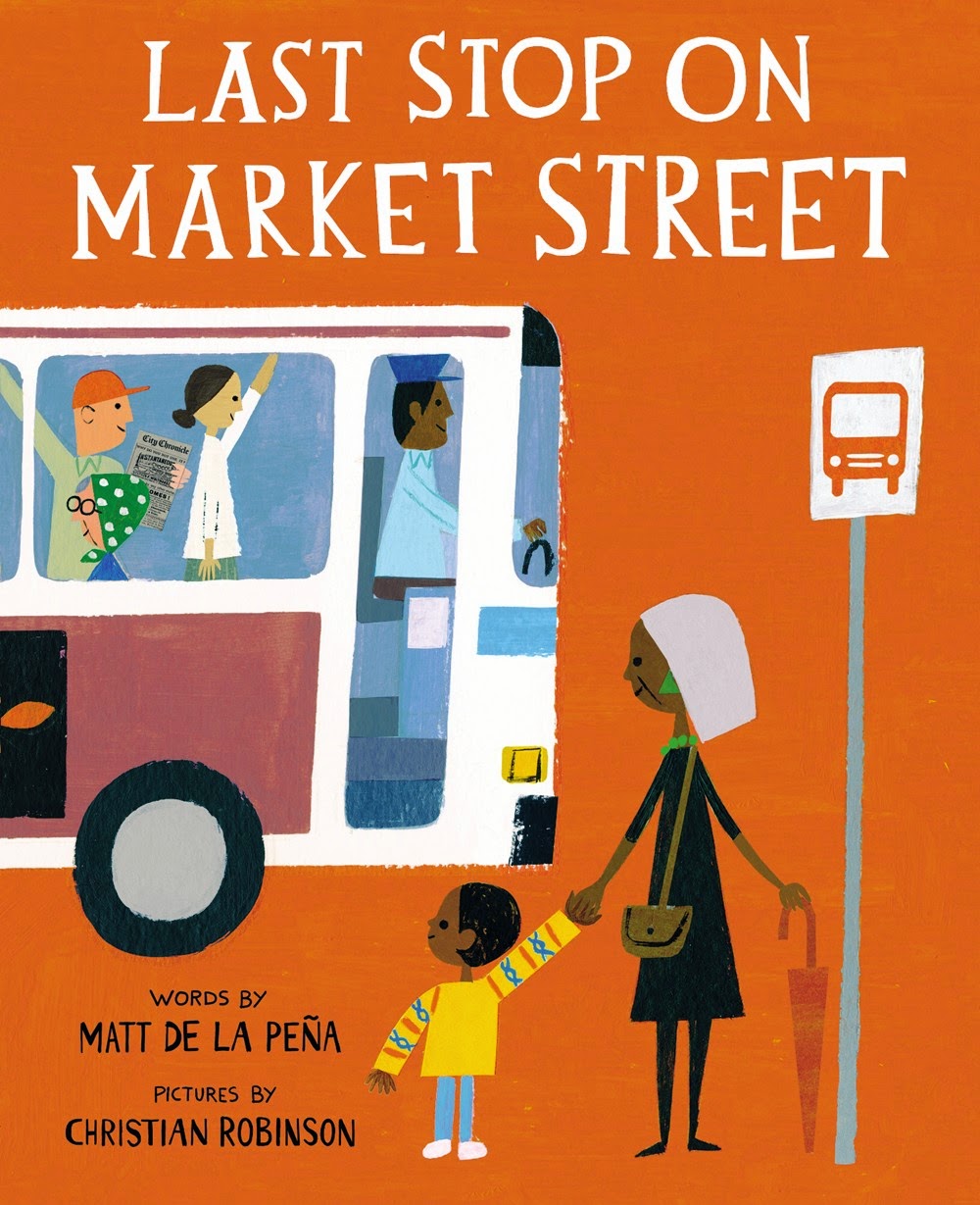
If there’s any theme behind my choices this year, it’s that they’re not very original. Every other Mock Caldecott in the country has been talking about this book, and well that they should. To my mind, this book has a very good chance if only because the time is right for it. Look at the Caldecott Award winners of the past. Books that speak to the times in which we live win the awards. Whether intentional or not, the Caldecott committee is going to say something with their choice about what “distinguished” means. In my recent article about the trends of 2015 and 2016 I mentioned that you cannot look at the debates sweeping the children’s literature landscape without considering the greater picture. And the greater picture, as I see it, dictates that we need more diversity not just in the racial make-up of our authors, illustrators, and subject matter, but also in economic realities. This book is beautiful, well-written, and does something I haven’t seen since Ezra Jack Keats: It makes the urban landscape beautiful. The time for this book is now. It’s my pick as winner.
Honors: In a Village By the Sea by Muon Van. Illustrated by April Chu

The Beach Boys song “Wouldn’t It Be Nice” is playing in my head right now. Because it would be nice if this book got an Honor. Nice for the author and illustrator. Nice for the small publisher from which it hails. Nice to see a wordless book get some love. It’s a dark horse contender, I think, but I wouldn’t count it out.
Honors: Drum Dream Girl: How One Girl’s Courage Changed Music by Margarita Engle. Illustrated by Rafael Lopez
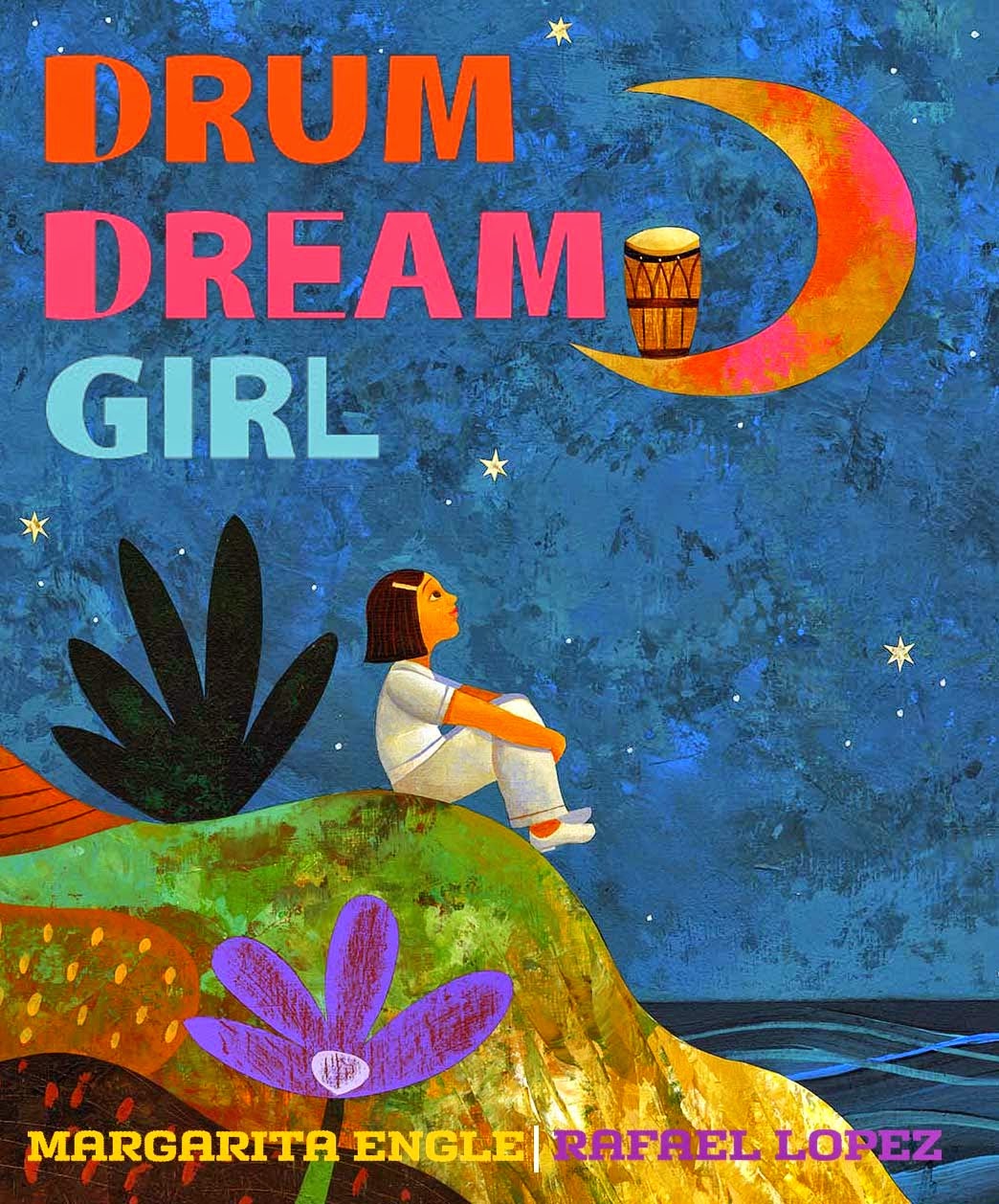
Rafael Lopez is long overdue for a Caldecott in some kind of form. This isn’t to say that he’ll necessarily get the Honor he deserves (and heck, he might get an Award proper!) but it makes me think that there’s a chance that someone on the committee will harbor affections for this book in the secret recesses of their heart.
Newbery Award
Since last year the Caldecott had a ton of Honors, I’d like to think that with the strong contenders of written works in 2016, there might be room for a plethora of these instead.
Winner:
The Hired Girl by Laura Amy Schlitz

Though it was considered contentious earlier this year, one cannot help but notice that things are different for The Hired Girl these days. People came to it in the midst of the debate and discovered that it was beautifully written. Other folks who might not have picked it up did so and found that they loved it. Support swelled, it appeared on the New York Times YA bestseller list a week or two ago, and everything culminated in yesterday’s Scott O’Dell Award announcement. I’ve been watching all of this, and just as I feel that Last Stop on Market Street speaks to our current time and place, so too does The Hired Girl, only it represents a novel’s ability to become a focal point for a debate that extends far beyond itself. At its heart, The Hired Girl is distinguished. It could easily take away the award by itself.
Honors:
The War that Saved My Life by Kimberly Brubaker Bradley
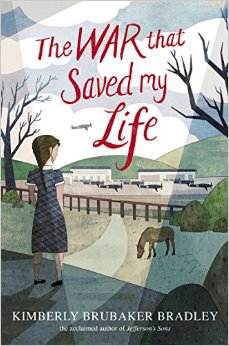
The year’s most surprising popular favorite. Not that I was particularly surprised myself. I’d been plugging away for Jefferson’s Sons, Ms. Bradley’s previous book, to take away the prize years ago. This may get bupkiss too (popularity by no means assures success in the award field) but at least a LOT of people read it that might not have otherwise.
Honors: Most Dangerous by Steve Sheinkin

Surprise!! First time this one has made any of my prediction lists. Why the switcheroo? Um . . . well, I actually sat down and read it. Boy howdy, is it good. Tackling, in some ways, a subject far more complex than BOMB (his previous award winner) I could easily see this carrying a bunch of different awards from a bunch of different categories. And, as with many books mentioned today, it’s hugely timely.
Honors: Echo by Pam Munoz Ryan

I’ve gone back and forth on this one for a while. On the one hand, there’s something about this book that sears into your brain and takes up residency in your frontal lobe. On the other hand, the connecting fantasy element is entirely superfluous. At the end of the day, I think the distinguished merit (which it exudes from every pore) outweighs any concerns I might have. It’s not a given, but it’s a strong contender.
Honors: Gone Crazy in Alabama by Rita Williams-Garcia
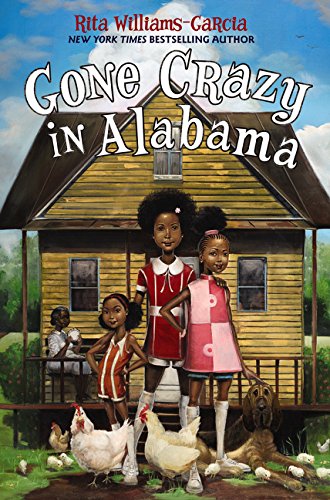
As I mentioned in a previous prediction post, this book took a while to percolate in my brain. It was only after I talked it over with folks and thought long and hard about it that I realized it had a very strong shot at an award of some sort. It could easily take home the gold medal proper, by the way. We shall see what we shall see.
Phew! That’s all from me. Now go and catch your flights to Boston and tell me how everything is while you’re there.

Around this time of year people start discussing what kind of a publishing year it has become. Is this a strong year for picture books? A weak year for nonfiction? An unusually peculiar year for fiction? It’s all based on personal assessments, containing little to no empirical evidence one way or another, culminating, in the end, in personal opinions. Of which I’ve a mint!
So, from my sole, solitary standpoint, 2015 is shaping up to be . . . well, it’s fine. There really haven’t been that many late breaking hits. The books the publishers assumed would be hits became hits (though maybe not to the degree that they’d like in some cases). The books they thought would get critical acclaim have gotten critical acclaim, again to varying degrees. But nothing I’ve seen discussed thus far is all that different from what I saw back in April. Envelopes are not being pushed one way or another in particular. If I’ve seen any trend it’s for YA nonfiction that clearly behooves the adult reader.
So today you’ll only see a couple changes from the spring edition and the summer edition of this prediction list. The Calling Caldecott site is up and running by this point, as is the delightful Heavy Medal, so you may wish to get alternative opinions on these matters. In the meantime, my list so far . . .
2016 Caldecott Predictions:
Drum Dream Girl: How One Girl’s Courage Changed Music by Margarita Engle. Illustrated by Rafael Lopez

Beauty should be rewarded. And Mr. Lopez has not gotten his just rewards in this respect. To be fair, it’s difficult to say whether or not any of the books he’s done thus far have contained Caldecott-worthy subject matter. I think we can all agree that when you add Lopez’s art to Engle’s writing, the results deserve as many of those bloody starred reviews as possible. And maybe a couple of those shiny round medals too.
Finding Winnie: The True Story of the World’s Most Famous Bear by Lindsay Mattick. Illustrated by Sophie Blackall

That Ms. Blackall has never won a Caldecott seems to me a bit of an oddity. And consider the pedigree of this book. It’s about an animal that inspired one of the great characters in children’s literature. Lovely writing (which I found rather clever in its construction) alongside pitch perfect art. The tone, man, the tone! Can we talk about tone? Can we talk about the fact that there is a feeling of calm and peace that emanates from the pages? Give it something shiny, for the love of all that’s good and holy!
In a Village By the Sea by Muon Van. Illustrated by April Chu

You know, I started out by saying it was a dark horse contender but the more I look at it and the more buzz it receives, I think I’m actually on to something here. Chu’s a debut illustrator and this book is so smartly done. I still haven’t seen the work she’s done on Ada Byron Lovelace and the Thinking Machine, but give it time. This artist is going places.
Last Stop on Market Street by Matt de la Pena. Illustrated by Christian Robinson

I’ve been getting the title mixed up in my brain recently. And to Think I Saw it On Market Street . . . no . . . no, that’s not it. Or was it On Market Street? No . . . no . . . still not right. I know Chronicle managed to grab the wheel of the Christian Robinson conversation and put all the attention on that Mac Barnett book he did (which is, let’s all admit it, perfectly nice) but if you’re talking award contenders then this is the one to discuss. You get whiffs of Ezra Jack Keats off the pages as you turn them. That ain’t nothing.
The Marvels written & illustrated by Brian Selznick
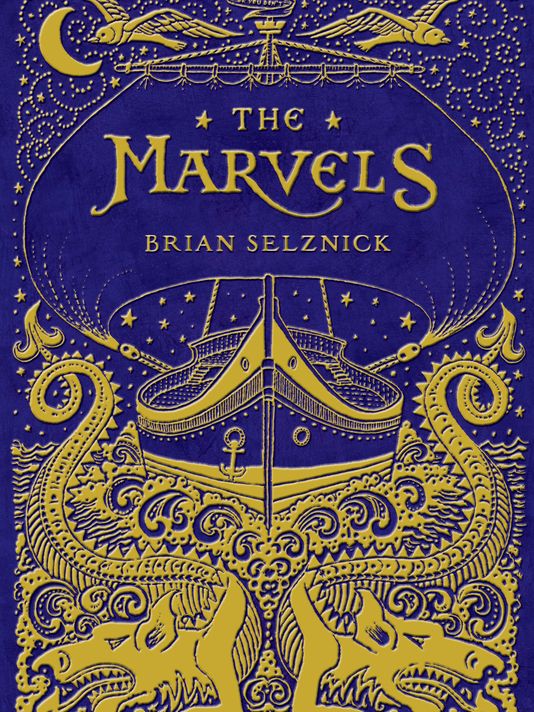
That image of the baby. Need I say more? Those of you who read the book will understand. Baby. I’m out! *drops the mic*
The Moon Is Going to Addy’s House by Ida Pearle
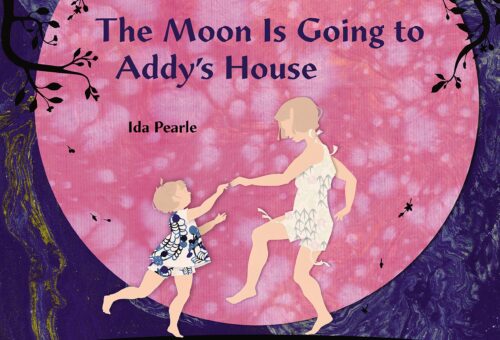
I’m bloody standing by this one. I just get sort of tangled up in my own emotions when I encounter artists that can capture physical movement with mere snips of their scissors. The fact that the papers themselves are beautifully made doesn’t hurt, but I really like how the story is told, the relationship between the characters, and the overall package. Moon. Sisters. Bedtime.
Night World by Mordecai Gerstein

Another night book. Gerstein at his best attempting to capture whatever the opposite of “magic hour” is called. The nice thing about Mr. Gerstein is that you don’t have to spend a lot of time discussing him. He simply is the best.
Water Is Water by Miranda Paul. Illustrated by Jason Chin

Like a lot of children’s librarians I keep a little list of “Never Won a Caldecott But Shoulda” contenders in my back pocket. And if I were to rank them, Mr. Chin would be somewhere high up on the list. Until now his books have been his own. Here he combines with a different author and for all its simplicity it may well be his best work. He does such lovely things with mist. I shall say no more.
Float by Daniel Miyares

Back on the list by popular demand! Popular demand = people actually really enjoying it. When I mentioned this book on my spring list I was left wondering if I was the only person who saw real potential in it. Now I know I’m not alone. Miyares manages to not only capture a kind of cloudy light found only on overcast days, but the relationship between the boy and his father is so beautifully rendered (wordlessly at that!) that you can’t help but adore the end product.
Fire Engine No. 9 by Mike Austin
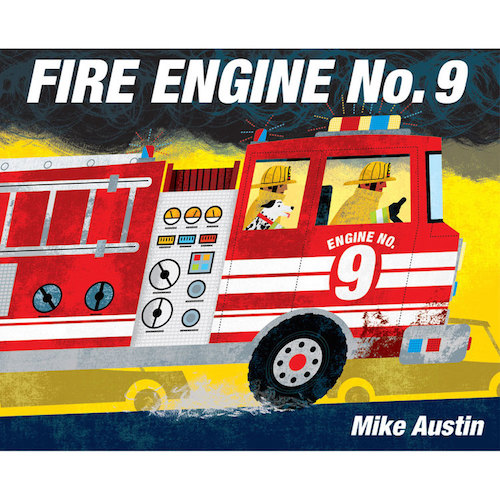 Betcha didn’t see THAT one coming! Ha ha! It’s not like we haven’t seen Mike Austin books before. You may even see this book and think “Oh great. Another firefighter book.” But that’s where you’re wrong, bucko. This is a great book. It’s an onomatopoeiaic (not a word) extravaganza. All the sounds of the fire engine with a classic look (it’s been compared to the work of Donald Crews) and a contemporary feel.
Betcha didn’t see THAT one coming! Ha ha! It’s not like we haven’t seen Mike Austin books before. You may even see this book and think “Oh great. Another firefighter book.” But that’s where you’re wrong, bucko. This is a great book. It’s an onomatopoeiaic (not a word) extravaganza. All the sounds of the fire engine with a classic look (it’s been compared to the work of Donald Crews) and a contemporary feel.
Waiting by Kevin Henkes

Betcha saw THAT one coming! I kid, but you did, didn’t you? Everyone did. Everyone has. Quiet Henkes at his best. I think I called it “Waiting for Godot . . . for Kidz!” once, which I’ll stand by. That said, it’s lovely and a child would actually find its static lack of action interesting. It’s probably a great big metaphor anyway and we all know how much librarians adore metaphors. So maybe maybe . . .
And now we move on to the,
2016 Newbery Predictions:
Usually I’m able to determine potential Newbery winners far easier than Caldecotts. This year is different. I’m having a great deal of difficulty with the Newbery slots, whereas the Caldecotts (as you can see) just keep on coming. Still, here are with the ones that I continue to like and some I have newly discovered.
Circus Mirandus by Cassie Beasley
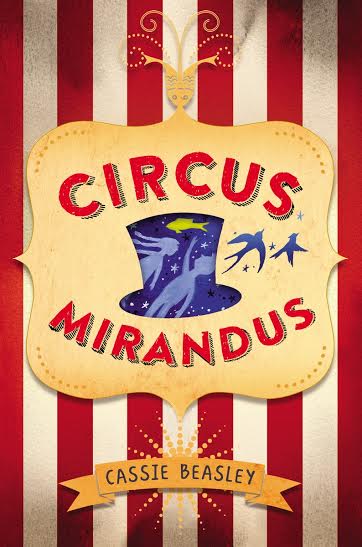
Hm. I think it holds up. Granted my early impressions were tempered by low expectations. Someone referred to it as the “Snicker of Magic of 2015″ but I don’t get that vibe from it. I think I may need to reread it, though. Best villain of the year, in any case.
Echo by Pam Munoz Ryan

Jonathan Hunt at Heavy Medals did some good pondering on this book so go thee hence and read what he has to say. Personally I found two of the stories far stronger than the third, and I found the magical element entirely superfluous. Yet I don’t think these objects make it any less “distinguished”. Interesting, isn’t it, how a tiny detail can sink some books in a reviewer’s eye while massive writing choices can be critiqued but the book remains strong just the same. Hm.
Gone Crazy in Alabama by Rita Williams-Garcia

Recently Rita Williams-Garcia sat down with Jeanne Birdsall to discuss their series and how they write for sisters. And certainly the sisters in this book are its strongest element. Now the first time I read this book, I wasn’t sure if it stood up for me. I was confused by the great-grandmother’s tiff with her sister and if the book stood alone. This is why I sometimes feel bad for books with a late fall release schedule. As time goes by you have the ability to step back and process a book. To return to it and synthesize it and determine what truly did and didn’t work. In the end, I found that this book stands on its own (or so my fellow librarians tell me) and that the ending is gut punch powerful. In short, it works. You can see my recent interview with Ms. Williams-Garcia here (but only if you want to know what she’s working on next).
Goodbye, Stranger by Rebecca Stead

This was one of the books I felt truly baffled wasn’t nominated for the National Book Awards this year. To be honest though, children’s books didn’t make a strong showing in 2015 in general. It was all YA, YA, YA with two sole exceptions. A pity since this book straddles children’s books and YA titles so successfully and yet it will struggle forever to find its home on library shelves. Which section should it go into? I say juv. I love what Stead’s done here and feel it’s a return to form.
The War that Saved My Life by Kimberly Brubaker Bradley

I’m so very pleased that everyone likes this book. And that everyone who walks into it with a skeptical eye walks away nodding slowly. Yes indeed. Strong writing that doesn’t pander. Big differing opinions on the book jacket, of course, but you can’t have everything in life. It was released VERY early in the year which may hurt its overall chances but I feel it has the chutzpah to carry through until the finish line. Go, team, go!
A Nearer Moon by Melanie Crowder

My new dark horse contender. I thought I’d be so sneaky to put it here but I see that it’s already been mentioned by a perceptive reader in the Heavy Medals comments. I was rather shocked that this slim little book was as beautifully written as it was. There is a great art to writing a short book for kids. I feel like the longer you go, the more you pad the story out. But Crowder (a master in her own right) keeps it “handsome” as my movie friends like to say. And in this post-Frozen world of ours, the theme of sisterly love is fascinating. It’s like a darker version of Rossetti’s Goblin Market or something. I still need to process it fully but it’s good. Very good.
The Hired Girl by Laura Amy Schlitz

Because it’s one of the best books of the year. Period. I may be giving away my review of it, but I very much feel that this is a book that only Candlewick would have published and only Laura Amy Schlitz could have written. It is the book for the kid who says “I loved Anne of Green Gables and Little Women. Do you have anything like that but that just came out?” Because the answer is almost always no. No, they just don’t make books like those anymore. Books about 14-year-old girls that just pulsate with that age’s bizarre combination of worldliness, uncertainty, and downright childishness. I’ll stop myself now. It’s hugely distinguished. FYI.
And yourself? What do you feel burns bright with distinction and joy?

The Summer Prediction edition of my Caldecott/Newbery ponderings is always a tricky beast. If the spring edition is looking primarily at books coming out in the spring, summer, and early fall, then the summer edition is looking at almost the entire year. However, at this point I’m still relying more on buzz than the considered opinions of colleagues and friends. Once we get to the fall edition I’ll have heard a lot of debates surrounding the books up for consideration and I’ll have a better sense of what folks feel about them. Until then, here’s what I’ve seen this year that I think deserves a closer look.
2016 Caldecott Predictions:
Boats for Papa by Jessixa Bagley
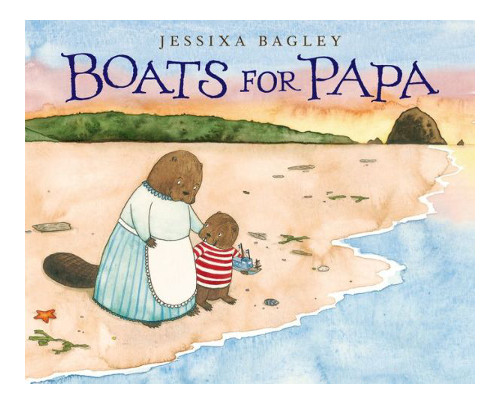 So this is a bit of a strange inclusion on my part, but you’ll get a hint of the background on this book from this recent Seven Impossible Things profile of the book and Ms. Bagley.
So this is a bit of a strange inclusion on my part, but you’ll get a hint of the background on this book from this recent Seven Impossible Things profile of the book and Ms. Bagley.
Here is my thinking on the matter. When we hand a book a Caldecott, we say we’re doing it to celebrate the art. I understand that. I get that. But if we’re being honest, the books that win are the ones that really reached into our chests, grabbed our hearts, and had the gall to make them pump a little harder. Boats for Papa has the 2015 distinction of being The Official Weeper of the Year. Which is to say, it makes folks cry. A lot. And YET it is not a Love You Forever situation where the writing is clearly for adults rather than kids. So Ms. Bagley is to be commended for the text. The artistic style, I admit here and now, is not for me. But when you are a children’s librarian you must let go of your own personal prejudices towards one style of art or another (if I had my way every Caldecott would go to Sebastian Meschmenmoser, regardless of citizenship or whether or not he has a book out in a given year). And while the style of Ms. Bagley is not to my own taste, I believe that in terms of conveying the storyline, the characters, and the heart of the writing, it does a stellar job. Still, I’d be interested to hear how other feel about it all.
Drum Dream Girl: How One Girl’s Courage Changed Music by Margarita Engle. Illustrated by Rafael Lopez

This is the book I most regretted not mentioning the last time I did a prediction post. I’ve admired Mr. Lopez’s work for years (and honestly feel that The Cazuela That the Farm Maiden Stirred deserved far more attention than it ever received). This book is one of those tricky little amalgamations of fact and fiction that will end up in the picture book section of the library while still managing to be CCSS aligned, to some degree. I read it to my three-year-old and she was astonished at the idea that girls could ever be told they couldn’t do anything. Plus it’s just so beautiful. The art is the man’s best work. I’d love to see this get a little attention.
Finding Winnie: The True Story of the World’s Most Famous Bear by Lindsay Mattick. Illustrated by Sophie Blackall

A straighter nonfiction title. Sometimes I wonder if the amount of background a Caldecott committee hears about a book affects their thinking come award time. Perhaps not. After all, I once attended a pre-ALA Youth Media Award lunch that feted some Caldecott committee members and was showing off books like Mr. Tiger Goes Wild, The Dark, and Pinkney’s The Grasshopper and the Ants. None of whom won a thing. Now if you knew the background behind Ms. Blackall’s art for Finding Winnie, you’d see how meticulous her work is on the book. Yet even without that knowledge the book is a beauty. The endpapers. The red sunrise with the ships sailing to England. The shot of a man, his bear, and Stonehenge itself. Oh, it’s a contender.
In a Village By the Sea by Muon Van. Illustrated by April Chu

Periodically debut illustrators receive Honors (and, once in a great while, awards proper). I know I keep harping on this book but I just think what the illustrator did to complement the text is just so darn brilliant. It rewards multiple readings. Sure, it may be a dark horse contender, but it’s a strong one just the same.
Last Stop on Market Street by Matt de la Pena. Illustrated by Christian Robinson

It was a little surprising to me how many marketing dollars were placed behind this particular book. Robinson has traipsed mighty close to award territory in the past. With this book he may not be paying a direct homage to Ezra Jack Keats but that was certainly the flavor I detected emanating from the pages. Even after all these months of seeing it I’m still having difficulty piecing my thoughts about it together. All I know is that it’s worthy of discussion.
The Marvels written & illustrated by Brian Selznick

This could just as easily fit on the Newbery Prediction category but since Hugo Cabret won a Caldecott lo these many years ago, this could walk a similar line. Separating itself into a wordless series of pictures in its first half and a text only novel in the second, it may be an even harder sell to the committee than Cabret was. Particularly since the text both within and outside of the pictures is sometimes the only thing that gives them form and function and meaning. But it’s rather remarkable, and committees have a way of rewarding books for that very quality.
The Moon Is Going to Addy’s House by Ida Pearle

Cut paper is a difficult art. Again, we’ve a debut on our hands, and in judging the book one must determine how much credit to hand to the quality of the paper being used (which, as you can see, is rather luminous) and how much to the actual cuttings. To my mind, this book is pretty much without parallel. Just amazing.
Night World by Mordecai Gerstein

Much of the reception to this book is going to hinge on how well people react to the ways in which Gerstein has painted pre-dawn light. One point in its favor: It contains a true moment of awe. When the dawn arrives it’s a jaw dropper of a moment. That’s what you want in an award winner.
Water Is Water by Miranda Paul. Illustrated by Jason Chin

One might rightly ask, why this Chin of all Chins? After all, it’s not as though Jason hasn’t been making similarly stunning books for years. The fact that he’s never gotten award love (at least in the Caldecott area of things) is a problem. I find that sometimes award committees have difficulty rewarding realism that isn’t surrealism (Wiesner wins awards but James Ransome, for example, does not). Here, Chin brings to life this infinitely simple, but incredibly clever, explanation for very young children of the water cycle in its different forms. And he does so with his customary beauty and skill. It’s worth considering at the very least.
The Whisper by Pamela Zagarenski
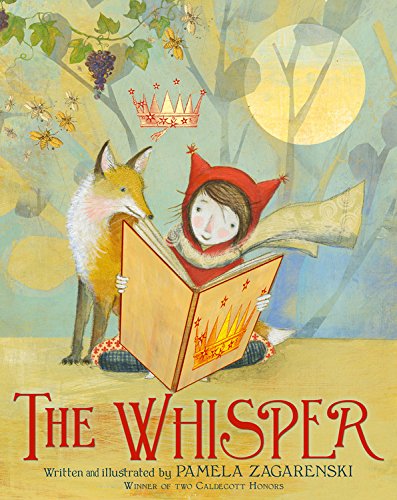
I’ve mentioned this one before with the note that I’m not usually a fan of Zagarenski’s work. And though I’ve seen that some folks don’t enjoy the storyline quite as much as I do, I’m going to keep this one the list. Of Zagarenski’s work (she is quite fond of floating crowns, you know), I do think this is her best. And if her previous books have won Caldecotts then ipso facto . . .
2016 Newbery Predictions:
Caldecott predictions are generally much easier to include on lists of this sort than Newbery predictions because reading a picture book takes all of 5 minutes, max (unless we’re discussing the aforementioned The Marvels, and then God help your soul). This year I’ve found a lot of books to love but few to seriously consider in this category. However, there were a few exceptions:
Circus Mirandus by Cassie Beasley

Let it be known that hype makes me wary. Exceedingly wary. So when I walked into a Penguin preview earlier this year and found they’d decked themselves all out in a circus-themed hullabaloo my warning signals lit right up. And sure, author Cassie Beasley was charming with her Georgian ways. Yet she read a passage from this book that would have had a lot more impact if I’d read the book already. So I put it off, and put it off, and all the while my fellow librarians were reading it and telling me in no uncertain terms that it was remarkable. I finally picked it up to read it. The verdict? It really is lovely! See my interview piece on Ms. Beasley about the difficulty in writing a non-creepy circus for more info. I also recommended it at Redbook, so win a copy here if you’re curious.
Echo by Pam Munoz Ryan

I’m still pondering this one, months and months after I read it. I think the supernatural element didn’t really need to be there since the three stories stand perfectly well on their own together. But I can also tell you that every detail of this book has been etched into my memory. And if you’ve any acquaintance with said memory, you’d understand why this must be a remarkable book.
Gone Crazy in Alabama by Rita Williams-Garcia

I had to do some research with my fellow librarians on this one before I could include it here. Not because it isn’t good. There is a vibrant undercurrent of truth running so strongly beneath this narrative that it almost hurts to read. The relationships between the three sisters is one-of-a-kind and powerful. In fact, if you’ve some free time in NYC on Saturday, August 1st we’re going to have a Children’s Literary Salon discussion between Jeanne Birdsall and Rita Williams-Garcia on their series and how it is to write about sisters.
At any rate, I had to determine whether or not the book stood on its own. I’ve read the first two books, so I was in no place to judge. So I handed it to some children’s librarians that had never read One Crazy Summer or P.S. Be Eleven. Their verdict? It works very well without prior knowledge of the previous books. Which means, it’s a true literary contender.
Goodbye, Stranger by Rebecca Stead

I’m just looking forward to the Newbery/Caldecott Banquet where all they serve (once this wins the award) is cinnamon toast and vanilla milkshakes. We’ve hashed the middle school vs. YA elements of this book before, so I’ve no particular desire to do it again here. I will say, however, that if Stead wins it may be the first time in the history of the award that the Newbery goes to a literary agent.
Tricky Vic: The Impossibly True Story of the Man Who Sold the Eiffel Tower by Greg Pizzoli
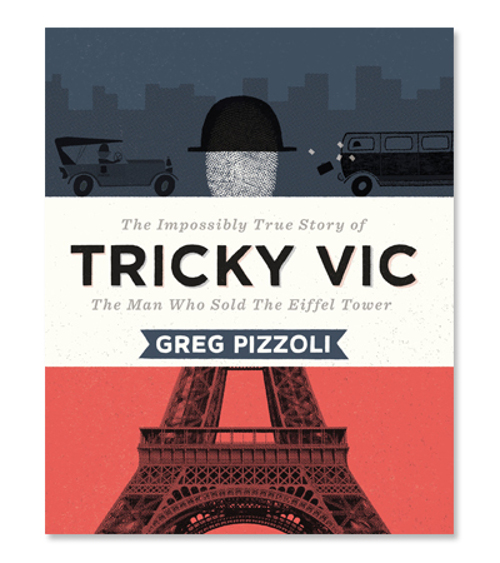 Actually, I debated placing this in the Caldecott category. After all, Pizzoli did a rather remarkable job of finding a way to keep his subject anonymous but still visible from page one onward. Yet it is the writing I think about when I consider the book. Synthesizing a single man’s life and turning it into a child-friendly narrative is no mean feat. Pizzoli did it with great cheer and fervor. A nonfiction title that deserves some Newbery love.
Actually, I debated placing this in the Caldecott category. After all, Pizzoli did a rather remarkable job of finding a way to keep his subject anonymous but still visible from page one onward. Yet it is the writing I think about when I consider the book. Synthesizing a single man’s life and turning it into a child-friendly narrative is no mean feat. Pizzoli did it with great cheer and fervor. A nonfiction title that deserves some Newbery love.
The War that Saved My Life by Kimberly Brubaker Bradley

My continuing to include this book in the ranking may be due in part to affection more than anything else. Still, I can’t help but think this has all the right elements in place. If kids can get past the cover (a detriment to getting even my staunchest librarians to read it) they’ll be amply rewarded.
Honorable Ineligible Mentions
Every year I read a couple books that I think should win Newbery or Caldecott awards. Yet, for one reason or another, they are ineligible. Here are my favorite ineligible books I’ve read in 2015 thus far.
The Nest by Kenneth Oppel. Illustrated by Jon Klassen
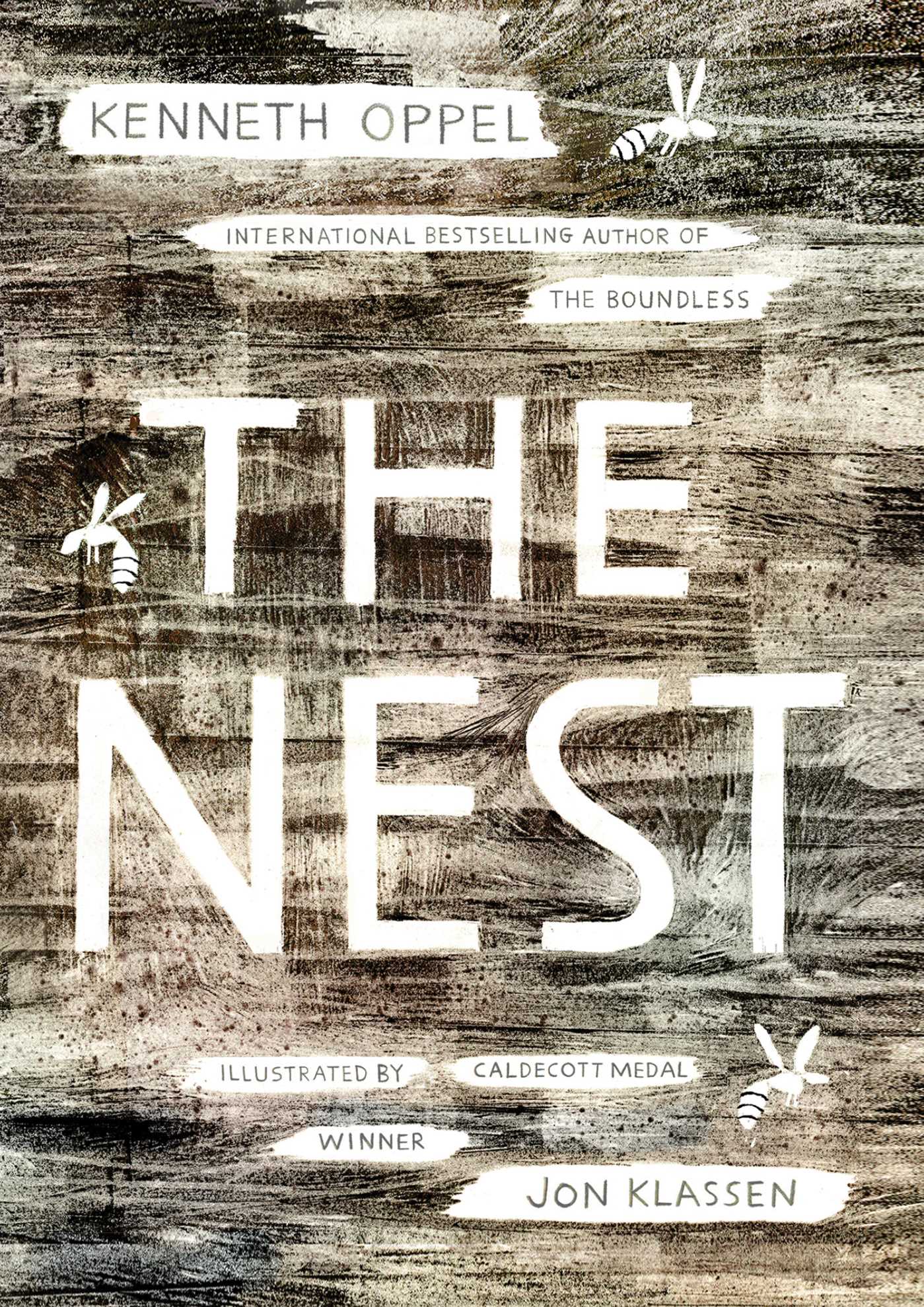
How have I not reviewed this book yet? To my mind it’s the strangest, most wonderful, creeeeeeeeeepy book of 2015. If Oppel wasn’t so inconveniently Canadian we’d be having a very serious debate about this book. By the way – apparently Canadians can serve on the Newbery committee but cannot win the award. How is that fair? I demand new standards, doggone it!
Pax by Sara Pennypacker. Illustrated by Jon Klassen
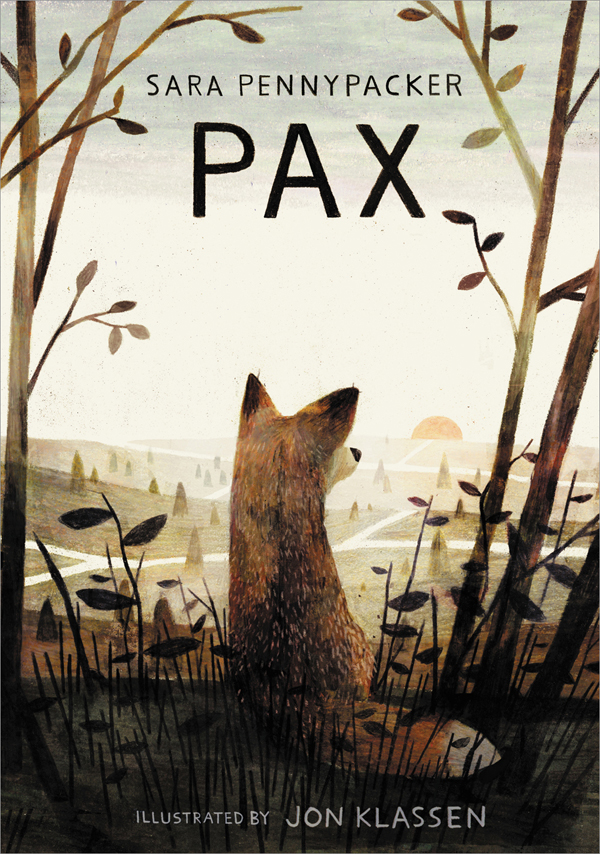
The bad news is that this book is ineligible for a Newbery in 2015. The good news is that this book is eligible for a Newbery in 2016. Once you read it you’ll be convinced of its worthiness. That said, how is it that Jon Klassen keeps getting to illustrate all the best novels? Did he sacrifice a cow to the book jacket gods? Or is it just that the man has exquisite taste? Hmm.
This Is Sadie by Sara O’Leary. Illustrated by Julie Morstad
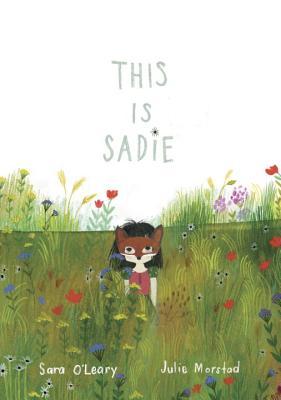
Canadian. Again. Morstad has also illustrated Laurel Snyder’s Swan, which could also have been up for consideration. I’m very pleased that folks are finally discovering Julie Morstad, by the way. I still think her board book The Swing is just one of the best out there.
That’s all she wrote, folks! I read most of your suggestions last time so if I missed something it may not have been accidental. That said, I know I’ve not read everything out there. What are your favorites thus far?


By:
Betsy Bird,
on 4/15/2015
Blog:
A Fuse #8 Production
(
Login to Add to MyJacketFlap)
JacketFlap tags:
Reviews,
poetry,
Best Books,
funny poetry,
Enchanted Lion Books,
Joohee Yoon,
collected poetry,
Best Books of 2015,
Reviews 2015,
2015 reviews,
2016 Caldecott contenders,
2015 poetry,
Add a tag
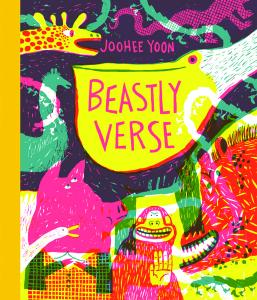 Beastly Verse
Beastly Verse
By Joohee Yoon
Enchanted Lion Books
$18.95
ISBN: 978-1-59270-166-7
Ages 3 and up
On shelves now
Poetry. What’s the point? I say this as a woman who simultaneously gets poetry and doesn’t get it. I get that it’s important, of course. I only need to watch my three-year-old daughter come up with an ever increasing and creative series of bouncy rhymes to understand their use. But what I don’t get is Poetry with a capital “P”. I have come to accept this as a failing on my own part. And to be fair, there are works of poetry that I like. They just all seem to be for the milk teeth set. With that in mind I was particularly pleased to see Beastly Verse, illustrated by Joohee Yoon. Full of fabulous classic poems and art that manages to combined a distinctive color palette with eye-popping art, Yoon’s creates a world that takes the madcap energy of Dr. Seuss and combines it with the classic printmaking techniques of a fine artist. The end result keeps child readers on the edge of their seats with adults peering over their shoulders, hungry for more.
As I mentioned, the resident three-year-old is much enamored of poetry. This is good because it makes her an apt test subject for my own curiosity. I should mention that my goal in life is to NOT become the blogger who uses her children to determine the value of one book or another. That said, the temptation to plumb their little minds can sometimes prove irresistible. Now Beastly Verse is not specifically aimed at the preschooler set. With poems like William Blake’s “The Tiger” and “Humming-Bird” by D.H. Lawrence, the verse can at times exceed a young child’s grasp. That said, none of the poems collected here are very long, and the art is so entrancing that the normal fidgets just tend to fade away as you turn the pages. My daughter did find that some of the more frightening images, say of the carnivorous hummingbird or the spangled pandemonium, were enough to put her off. Fortunately, each scary image is hidden beneath a clever gatefold. If the reader does not want to see the face of a tiger tiger burning bright, they needn’t open the fold at all. Not only is it a beautiful technique, it makes the book appropriate for all ages. Clever.
 One might not associate Yoon’s particular brand of yellows reds, oranges, greens, and blues with evocative prints. Yet time and again I was struck by the entrancing beauty of the pages. Yoon’s traditional printmaking techniques can bring to life the hot steam that rises even in the coolest shade of a tiger’s jungle. Another page and Lewis Carroll’s “The Crocodile” lingers below the surface of the water, his innards heaving with “little fishes”. Yoon saves the best for last, though, with a poem I’d not come across before. “Dream Song” by Walter de la Mare is set in the gleam of “Sunlight, moonlight / Twilight, starlight” when the sun is just a sliver of a white hot crescent on the horizon. All the forest is lit by the orange and red rays, and out of a tree pokes the head of a single owl. The hypnotic verses speaking of “wild waste places far away” mix with the image, conjuring up the moment moviemakers call “magic hour”.
One might not associate Yoon’s particular brand of yellows reds, oranges, greens, and blues with evocative prints. Yet time and again I was struck by the entrancing beauty of the pages. Yoon’s traditional printmaking techniques can bring to life the hot steam that rises even in the coolest shade of a tiger’s jungle. Another page and Lewis Carroll’s “The Crocodile” lingers below the surface of the water, his innards heaving with “little fishes”. Yoon saves the best for last, though, with a poem I’d not come across before. “Dream Song” by Walter de la Mare is set in the gleam of “Sunlight, moonlight / Twilight, starlight” when the sun is just a sliver of a white hot crescent on the horizon. All the forest is lit by the orange and red rays, and out of a tree pokes the head of a single owl. The hypnotic verses speaking of “wild waste places far away” mix with the image, conjuring up the moment moviemakers call “magic hour”.
Mind you, there is always a nightmarish mirror image to each seemingly sweet picture. The eyeless caterpillar all maw and teeth is turned, on the next page, into a beautiful but equally unnerving butterfly. Only Yoon, as far as I’m concerned, could have brought us the horrific implications of “The Humming-Bird” and its existence “Before anything had a soul.” Even the last seemingly innocuous image of Captain Jonathan cooking himself an egg takes on a dire cast when you realize it’s that of a pelican (of the poem “The Pelican” by Robert Desnos) he’s about to devour.
 This is by no means the first collection of animal poetry to grace our shelves. It was only two or three years ago that J. Patrick Lewis helped to collect the National Geographic Book of Animal Poetry. Many of the poems found in this book can be found in that one as well. However, while that book seemed to be going for sheer girth, Yoon’s selections here are carefully positioned. I was interested in the layout in particular. You begin with the aforementioned Carroll poem (which seems appropriate since a manic smiling cat graces the title page) and then transition into a nursery rhyme, a bit of typical Ogden Nash flippery (only three lines long), and then Blake’s best-known poem. Variety of length keeps the poems eclectic and interesting to read. They keep you guessing as well. You never quite know what kind of poem will come next.
This is by no means the first collection of animal poetry to grace our shelves. It was only two or three years ago that J. Patrick Lewis helped to collect the National Geographic Book of Animal Poetry. Many of the poems found in this book can be found in that one as well. However, while that book seemed to be going for sheer girth, Yoon’s selections here are carefully positioned. I was interested in the layout in particular. You begin with the aforementioned Carroll poem (which seems appropriate since a manic smiling cat graces the title page) and then transition into a nursery rhyme, a bit of typical Ogden Nash flippery (only three lines long), and then Blake’s best-known poem. Variety of length keeps the poems eclectic and interesting to read. They keep you guessing as well. You never quite know what kind of poem will come next.
Having read the deliciously multicultural Over the Hills and Far Away, collected by Elizabeth Hammill, it is difficult to pick up a collected work of poetry without hankering for a similar experience. Aside from artist Joohee Yoon’s own name and the fact that Robert Desnos was Jewish, there is very little in this collection that isn’t white and American/European. The reasons for this may have something to do with permissions. Every poem in this book, with the exception of a few, is in the public domain. None were commissioned for the book specifically. Mind you, it would have been possible for the book to follow Hammill’s lead and locate international public domain animal poems of one sort or another written specifically for children. It is therefore up to the reading public to ascertain if the book stands stronger as a collection of similar types of poetry or if it would have benefited from a bit of variety here and there.
In the end, it’s a beautiful piece. Children’s rooms are no strangers to beautiful art in their poetry collections, but Yoon’s distinctive style is hard to compare to anyone. The only poet/illustrator with the same energy that comes to mind (and that writes for kids) would have to be Calef Brown. And as debuts go, this is a stunner. A truly inventive and original collection that deepens with every additional read. Kids like it. Adults like it. It could have benefited from some diversity, absolutely. Overall, however, there are few things like it on our shelves. An inspiration.
On shelves now.
Source: Final copy sent from publisher for review.
Like This? Then Try:
Other Blog Reviews: A Year of Reading
Professional Reviews:
Misc: Years ago, it was Jules at Seven Impossible Things who alerted the children’s book world to Ms. Yoon’s presence. Here is the post.

There are traditions we adhere to because they are what we know. And what do I know? I know how much fun it is to predict Newbery and Caldecott winners WAY way way before I oughta. Why do I do it? Because it’s fun. Mind-blowingly ridiculous on some level. But fun.
Each year I also see whether or not my predictions had any bearing on the actual winners. With that in mind, here’s how I’ve done for the last six or seven years or so.
2008 spring predictions: I get one Caldecott right (How I Learned Geography)
2009 spring predictions: I get two Newberys right (The Evolution of Calpurnia Tate and The (Mostly) True Adventures of Homer P Figg)
2010 spring predictions: I get one Newbery right (One Crazy Summer)
2011 spring predictions: I get one Newbery right (Inside Out and Back Again)
2012 spring predictions: I get two Newberys right (The One and Only Ivan and Splendors and Glooms), and one Caldecott right (Green).
2013 spring predictions: I get two Newberys right (Doll Bones and One Came Home) and one Caldecott right (Mr. Wuffles). But pride goeth before the fall.
2014 spring predictions: Zip. Zero. Zilch.
Ruh-roh.
Ah, I was doing so well for a while there but 2014 was clearly a bust. To be fair, I hadn’t read the three Newbery winners by this point in the year since they were all later season releases. On the Caldecott side there were a fair number of books I could have considered. But if the 2015 wins tell us anything, it is that books beloved in the early part of the year can completely turn around and be forgotten by the second half.
And yet, I still love these little predictions. If only because I get to cheer on the books I like the most.
This year, actually, my predictions are a bit backwards. Usually I feel like I have a strong handle on the Newbery and a weak grip on the Caldecott. This year? It’s flipped. But enough jabber jawing. Let’s look at some pretty pretty books:
2016 Caldecott Predictions
A Fine Dessert by Emily Jenkins, ill. Sophie Blackall

Blackall has never won a Caldecott. One might wonder why that is and come to the conclusion that her clean lined style is too seemingly simple for the committee. Perhaps, but if so it’s a misguided interpretation. I recently had the pleasure of hearing her speak about the research she did on this book, and it made me wonder if any of the Caldecott committee members would hear her, or anyone at her publishing house, say similar things. Because once you know the sheer extent to which she fought for details like the book’s ice pit, that is knowledge you can never unknow. Mind you, if her other book out this year about the bear that inspired Winnie-the-Pooh wins instead, I’ll be perfectly happy with that instead.
Float by Daniel Miyares

The wordless book is the picture book illustrator’s equivalent of a monologue. Suddenly the words vanish and you’re center stage, commanding the audience’s attention by sheer will and artistic technique. It can be intimidating. Now this year we’re seeing a utterly gorgeous (and Canadian) Sidewalk Flowers by JonArno Lawson getting a lot of press. It is not, however, the only sidewalk-inclined wordless picture book out there. Miyares, who has flown under the radar for a number of years, has created his own subdued and rather lovely tale of a boy, a boat, a storm, a loss, and coming home to daddy. I’ll need some more time to process this one but I like a lot of what it’s doing.
The Moon Is Going to Addy’s House by Ida Pearle

I’m sorry the scan of the cover is so crummy here, since part of the lure of this book (aside from the near magical use of cut paper to convey movement and characters) is the use of color. This is a lush, magnificent title that manages to take cut paper and make it live. There’s one particular shot of a little girl running to her daddy that will drop your jaw to the floor and shatter it completely. Absolutely stunning.
Night World by Mordecai Gerstein

I’m always wary of Newbery/Caldecott prediction lists that are full of previous winners. It always strikes me as a technique bereft of imagination. That said, sometimes it just makes good, clean sense. The next two artists you see mentioned here are previous winners in one capacity or another. Gerstein’s book plays with tones and hues and what you do or do not see when the sun is gone. It has a killer ending where the sun rises and the colors return to the world that’s worth the price of admission alone. We haven’t seen him win anything since The Man Who Walked Between the Towers. Maybe this year’s the year to rectify that.
The Whisper by Pamela Zagarenski

Not to be confused with the 2015 Aaron Starmer novel of the same name (though the two pair together eerily well). I will confess to you that in the past I’ve not been the biggest Zagarenski fan. It’s something about the crowns she draws. I must have a low crown tolerance. So credit it to low expectations if you like, but when I picked up The Whisper to read I expected the same old, same old. What I got instead was a book so imaginative and clever that it may just as easily live on as a writing prompt title as a work of beautiful art. I do wonder if my love of the text is affecting my view of the art. Maybe so, or maybe this really is the best thing she’s ever done. You’ll have to decide for yourself.
2016 Newbery Predictions
Echo by Pam Munoz Ryan

I really only have three titles on the old Newbery side of things this spring. It isn’t that I haven’t read a lot of potential winners. I have! It’s just a trickier year than I was expecting. Now Ryan’s book listed here is a big thick brick of a title. A definite paperweight, should you need one. It takes three stories and a single instrument to highlight three very different lives before and during WWII. I’m still picking apart my thoughts on it and I haven’t had a chance to have a nice long conversation with anyone about it yet, so all I’ll say is that it will certainly be a discussed title by the committee.
Goodbye, Stranger by Rebecca Stead

Of all the books list here in this post today, this is the book that I think has the best chance at a win. What Stead has penned here is a middle school book, so it presses up against the upper ends of the Newbery’s age range (14). I’ve already heard some folks wonder if they enjoyed it more as an adult than a kid would. Time will tell on that account, but if the Newbery is supposed to go to the most “distinguished” children’s book, then this is the one to beat. I can’t think of anything else this year that approaches its level.
Listen, Slowly by Thanhha Lai

Tricky one. On the one hand the story is great, the characters vivid, the setting a character in and of itself, and some of the prose just heartbreakingly lovely. On the down side, it’s got a couple scenes that could have been cut down or out. There’s a confusing love triangle that serves no apparent purpose, and a dentist/moped sequence that I had to read and reread a couple times to myself to understand. To win a Newbery this book will have to overcome these elements. Then again, it stays with you long after you put it down. Funny to mention it after Goodbye, Stranger too. One book contains a lacy bra, and this book contains a plethora of thongs.
The War That Saved My Life by Kimberly Brubaker Bradley

You wouldn’t know it from the cover, but this is one of the year’s most enjoyable reads. Review after review comments on how much fun the reader had getting through it. It shouldn’t work but Bradley (who I pegged for a Newbery years ago for her Jefferson’s Sons, only to be disappointed) has amazing skills and an even better cast of characters. I almost wonder if this book has a Newbery chance, considering the pleasure it elicits from my fellow gatekeepers. Guess we’ll just have to see.
That’s all she wrote, folks. What have you preferred thus far? Surprise me.

 Radiant Child: The Story of Young Artist Jean-Michel Basquiat
Radiant Child: The Story of Young Artist Jean-Michel Basquiat Javaka Steptoe apparently doesn’t like to make things easy for himself. If he wanted to, he could illustrate all the usual African-American subjects we see in books every year. Your Martin Luther Kings and Rosa Parks and George Washington Carvers. So what projects does he choose instead? Complicated heroes who led complicated lives. Artists. Jimi Hendrix and guys like that. Because for all that kids should, no, MUST know who Basquiat was, he was an adult with problems. When Steptoe illustrated Gary Golio’s bio of Hendrix (Jimi: Sounds Like a Rainbow) critics were universal in their praise. And like that book, Steptoe ends his story at the height of Basquiat’s fame. I’ve seen some folks comment that the ending here is “abrupt” and that’s not wrong. But it’s also a natural high, and a real time in the man’s life when he was really and truly happy. When presenting a subject like Basquiat to a young audience you zero in on the good, acknowledge the bad in some way (even if it’s afterwards in an Author’s Note), and do what you can to establish precisely why this person should be mentioned alongside those Martin Luther Kings, Rosa Parks, and George Washington Carvers.
Javaka Steptoe apparently doesn’t like to make things easy for himself. If he wanted to, he could illustrate all the usual African-American subjects we see in books every year. Your Martin Luther Kings and Rosa Parks and George Washington Carvers. So what projects does he choose instead? Complicated heroes who led complicated lives. Artists. Jimi Hendrix and guys like that. Because for all that kids should, no, MUST know who Basquiat was, he was an adult with problems. When Steptoe illustrated Gary Golio’s bio of Hendrix (Jimi: Sounds Like a Rainbow) critics were universal in their praise. And like that book, Steptoe ends his story at the height of Basquiat’s fame. I’ve seen some folks comment that the ending here is “abrupt” and that’s not wrong. But it’s also a natural high, and a real time in the man’s life when he was really and truly happy. When presenting a subject like Basquiat to a young audience you zero in on the good, acknowledge the bad in some way (even if it’s afterwards in an Author’s Note), and do what you can to establish precisely why this person should be mentioned alongside those Martin Luther Kings, Rosa Parks, and George Washington Carvers. The precise age when a child starts to feel that their art is “not good” anymore because it doesn’t look realistic or professional enough is relative. Generally it happens around nine or ten. A book like Radiant Child, however, is aimed at younger kids in the 6-9 year old range. This is good news. For one thing, looking at young Basquiat vs. older Basquiat, it’s possible to see how his art is both childlike and sophisticated all at once. A kid could look at what he’s doing in this book and think, “I could do that!” And in his text, Steptoe drills into the reader the fact that even a kid can be a serious artist. As he says, “In his house you can tell a serious ARTIST dwells.” No bones about it.
The precise age when a child starts to feel that their art is “not good” anymore because it doesn’t look realistic or professional enough is relative. Generally it happens around nine or ten. A book like Radiant Child, however, is aimed at younger kids in the 6-9 year old range. This is good news. For one thing, looking at young Basquiat vs. older Basquiat, it’s possible to see how his art is both childlike and sophisticated all at once. A kid could look at what he’s doing in this book and think, “I could do that!” And in his text, Steptoe drills into the reader the fact that even a kid can be a serious artist. As he says, “In his house you can tell a serious ARTIST dwells.” No bones about it.

































You nailed it. In every category.
I agree with all your selections and hope you’re right!
(I would, however, like to see Finding Winnie and/or Boats for Papa in the Caldecott realm.
Glad that you’re doing the pre-game show (I think your links need to be checked–they brought me to the opposite show that was listed). Might miss the first 10 minutes or so (I’m watching the presentation from work and don’t think I’ll get there before 7:30; I will need copious amounts of tea). I would be happy with any of these choices; my main concern is that we have the books in our collection or at least on order.
Oh, and bring the baby in if he starts to fuss!
How do your predictions align with/differ from your personal preferences?
Do you really think there will be only 2 Caldecott Honor books? I’m betting on Drum Dream Girl for the win, with honors for Finding Winnie, Tricky Vic, and maybe Last Stop…, In a Village… and Home. but I’m terrible at predictions, too.
Distinguishing predictions from personal preferences is nigh impossible. These aren’t really all the books I’d like to see win, though. I just find that, when it comes to awards anyway, it’s not uncommon for the pendulum to swing just as far one way as another. Last year we saw a load of Caldecott Honors. I would be very much surprised to see that many again. Not because I think the committee is actively thinking “we need to scale that down a bit” but on an unconscious level these things have a way of evening out. I could be woefully wrong, of course. Wouldn’t be the first time.
You got it. And I’ll switcheroo those links. Thanks for the heads up!
Me too. Believe me.
Let’s see… that will be 4:30 am on the left coast. I will be watching – maybe just with one eye open!
Oh, Betsy, to think that just a few days ago in response to 100 Magnificent Children’s Books 2015 I asked you why The Hired Girl was not on your list. You see, I have been feeling down because five starred reviews dropped to three stars on the Best lists and then Cybils did not select it as a finalist. Then yesterday brought the news about the Scott O’Dell Award and today you write about the positive momentum you have seen recently. This pleases me so much. I’m not trained nor experienced in the evaluation process, but I know what I like. Can you imagine my excitement for MY FAVORITE BOOK OF ALL TIME!!! I keep telling myself, over and over, It’s no big deal, they are only 15 individual opinions; so many I respect have already shown great support; other awards are very possible . . . but still I know I will feel disappointment if this book does not receive at least an honor. How I wish you could be cloned 14 times and make up this committee! Your choices are excellent!
For those of us not in the know, can you explain what, precisely, an author does in a wordless book like “Village By The Sea”? Do they present a page-by-page story breakdown for the illustrator? A couple of paragraphs relating the tale they wish to have depicted? I’m curious!
I think it changes on a case-by-case basis. Years ago I saw Jennifer Armstrong talk about her work with David Small on ONCE UPON A BANANA. Most do come up with breakdowns of the pages, but there has to be a point where they let go and let the artist make it their own. Hmmm. This would make a good blog post.
I really loved The Hired Girl, The War That Saved My Life, and Gone Crazy in Alabama (and that one surprised me – I think it’s the best of the Gaither Sisters trilogy) and would be really pleased to see any of them win. I think I have a soft spot for The War That Saved My Life. I don’t understand the love for Echo, but I seem to be alone in that!
I’m looking forward to Most Dangerous – I just passed Bomb to my 10-year-old son.
In a Village by the Sea has words, actually!
Yep, there are words in In a Village by the Sea, really beautiful rollicking words. It’s a this-is-the-house-that-Jack-built structure that’s just lovely.
Betsy, your choices are fabulous and I loved each one of them. Don’t you love how we can celebrate all of them and find just the right reader for each? Choosing just 3 is impossible in so many ways. And yet it’s so much fun to see what different people choose!
My students just voted for their Mock Newbery after a great discussion. They chose ALL THE ANSWERS for their Mock Newbery Medal, and had 3 honor books: BAYOU MAGIC, CHASING SECRETS, and SHADOWS OF SHERWOOD. They really developed their discussion skills, talking about characters, setting, plot, themes. I love the variety of genres represented in their choices.
Looking forward to your post-game show (alas, the pre-game is just too dang early for me!).
D’oh! Good call. Correcting.
I am crazy about OUT OF THE WOODS by Rebecca Bond, but I’ve seen very few picture books this year, poor me.
My third graders (at Kensico School in Valhalla NY) just finished their voting on our mock Caldecott…
The Medal goes to Waiting, with Honors for Drowned City, Float, My Pen, and The Skunk.
We’re eagerly awaiting the news from Boston on Monday morning!
I wish I’d had more time to examine that one. It made it onto NYPL’s 100 Books for Reading and Sharing list too.
Thanks for the analysis. Is it time to say that your opinions don’t reflect EPL instead of NYPL? I suppose that EPL does fall into the any-other-acronym-that-could-be-named category of course….
Hmmm. Good catch. Thought I corrected that one already. Apparently not. I’ll see if I can figure out where that info is located.